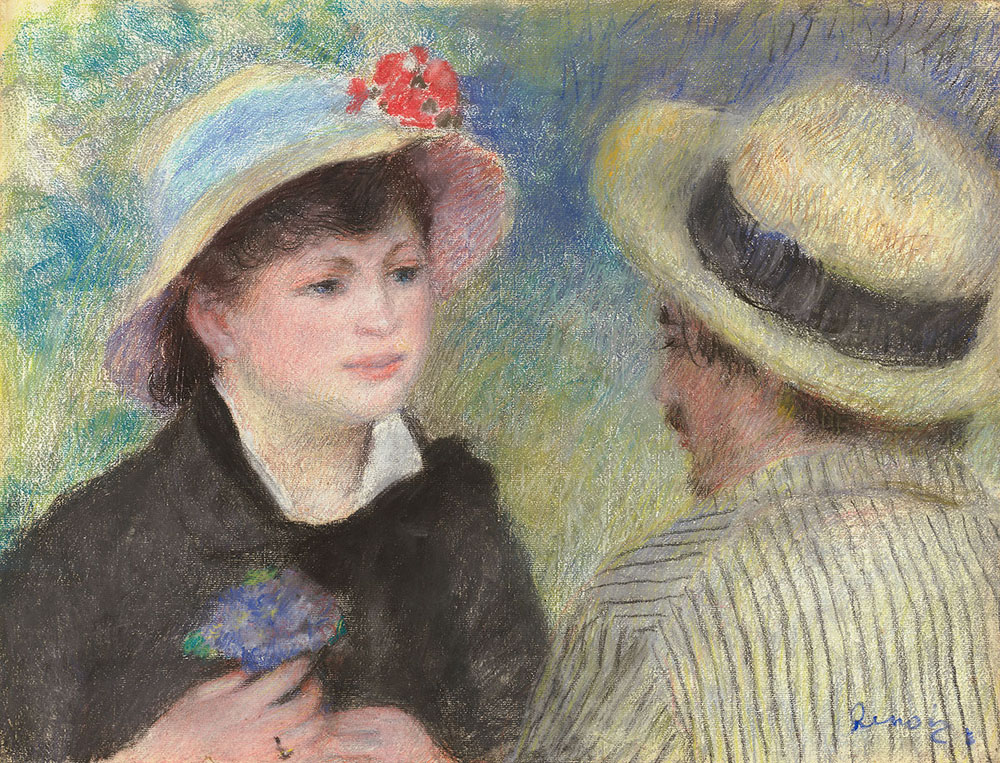Listen to director and curator Colin Bailey describe a study Renoir made while working on one of his large-scale canvases.

Renoir worked for several months in 1880–81 on Luncheon of the Boating Party (Phillips Collection, Washington, DC), a large canvas depicting a group of his friends on a riverside terrace in a Parisian suburb. Although he did not produce any preparatory sketches for the painting, he made several smaller works, including this pastel, that feature figures wearing similar clothing and arranged in similar poses to those in the painting. The pastel, like the painting, focuses on the protagonists’ social interactions and may have helped him develop the complex dynamics that animate the larger work.
Boating Couple, 1880–81
Pastel
Museum of Fine Arts, Boston, given in memory of Governor Alvan T. Fuller by the Fuller Foundation; 61.393
Photograph © 2025 Museum of Fine Arts, Boston.
In the summer of 1880, Renoir began work on a large, multi-figure painting of contemporary life entitled Luncheon of the Boating Party, set on the terrace of a restaurant in the Parisian suburb of Chatou, on an island in the Seine. Nearly all of the fourteen figures are identifiable as friends and favorite models of the artist. To make the painting, Renoir invited his sitters to the location for several days or even weeks at a time, and he worked directly on the canvas as they posed, without making any preliminary sketches or studies. He did, however, make other works in the same location with the same models, including this pastel. Here the woman’s soft straw hat adorned with a sprig of bright red flowers is the same as that worn by a different woman in the painting, while the man’s black-and-white striped jacket appears with blue stripes on a man in the painting, and his flat-topped straw boater is worn by a third figure. The ambiguous nature of this pair’s interaction is similarly echoed in the convivial yet undefinable relations among the painting’s various groupings. Renoir expressed frustration at the difficulties involved in such a complex composition with so many sometimes hard to manage sitters, and he may have made this vivid, fully finished pastel when he was faced with challenges with the canvas.
